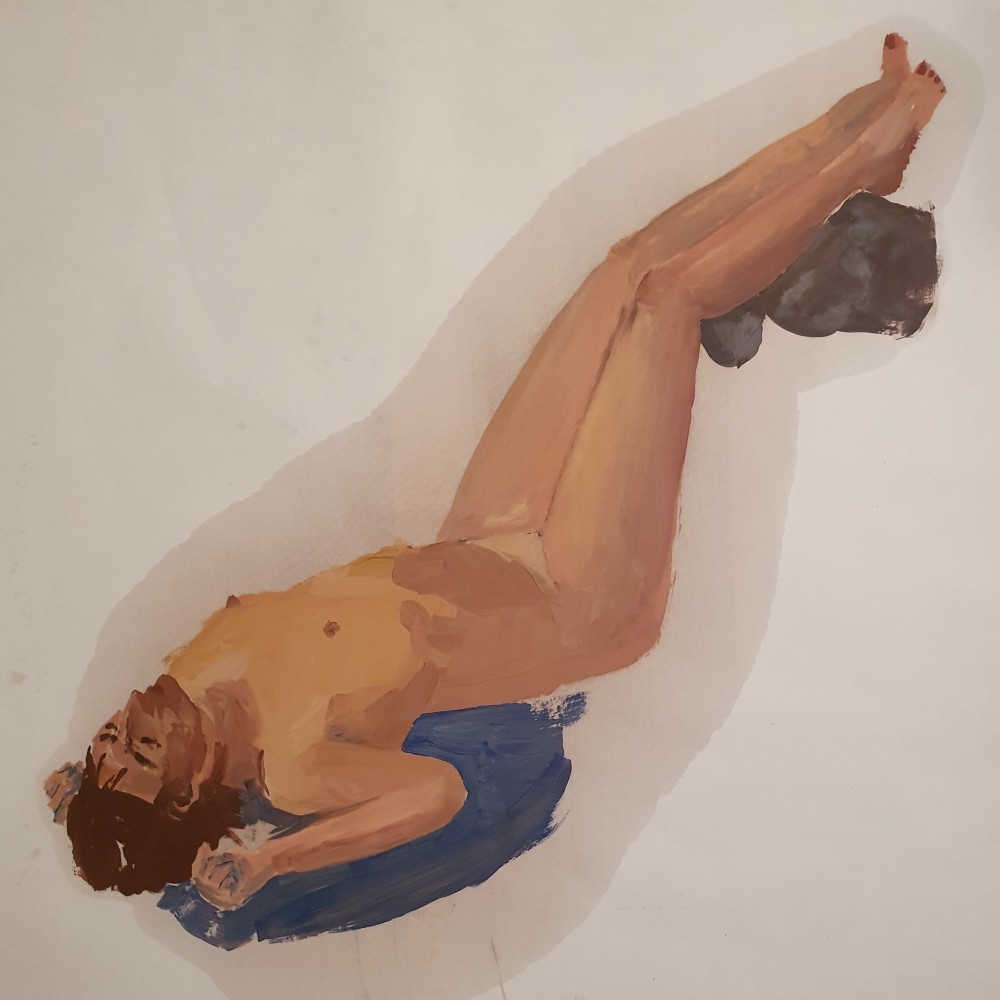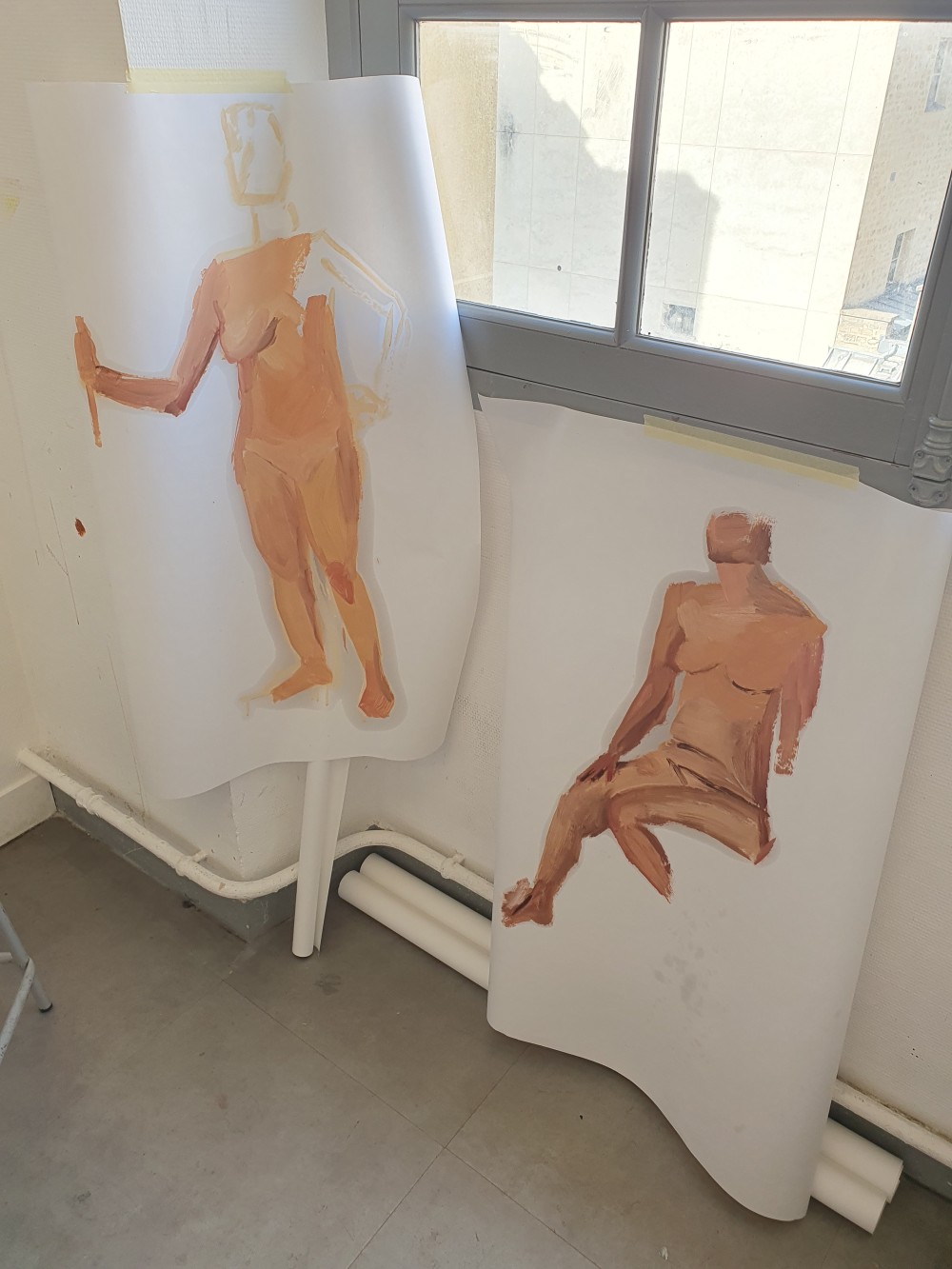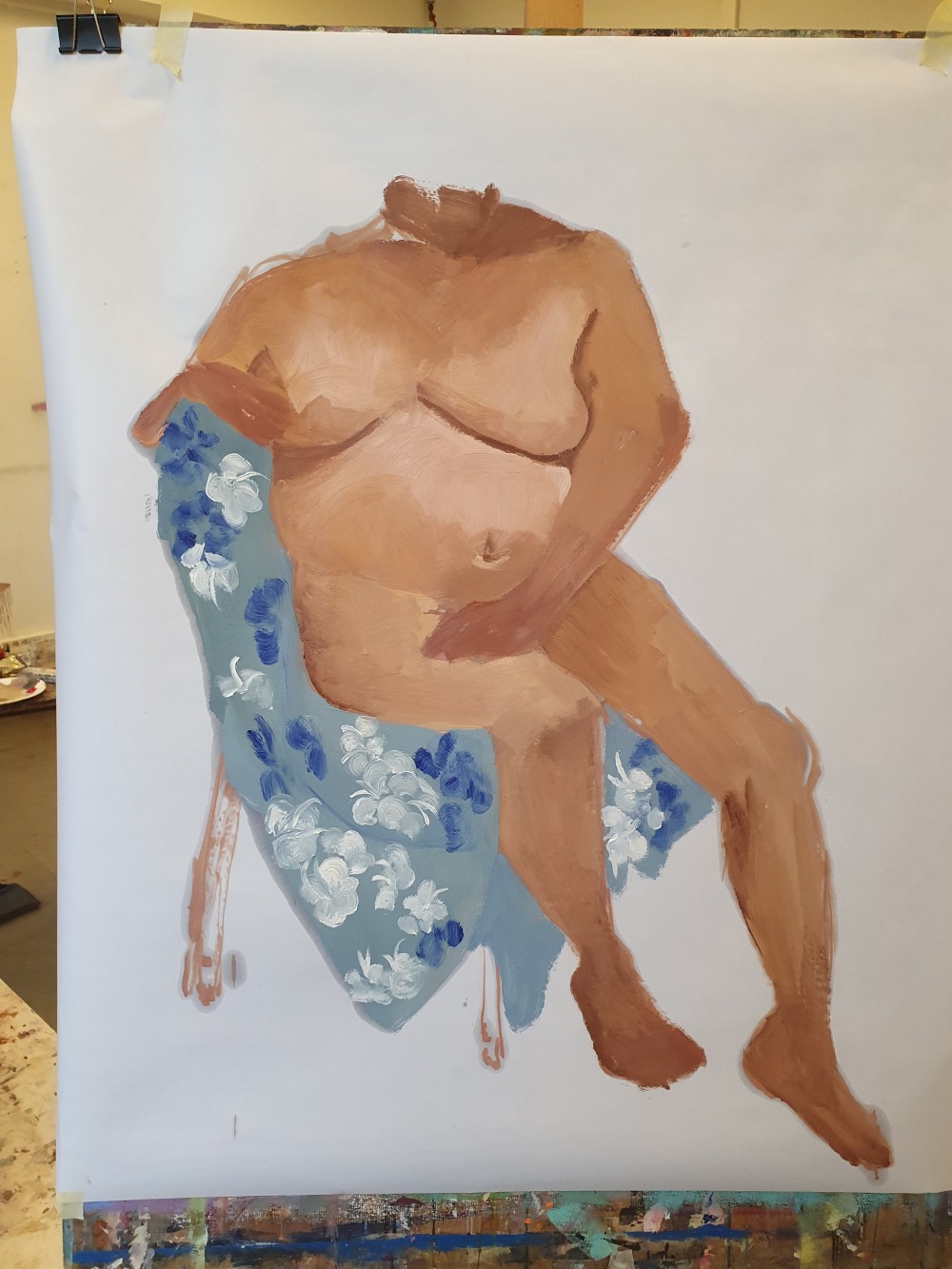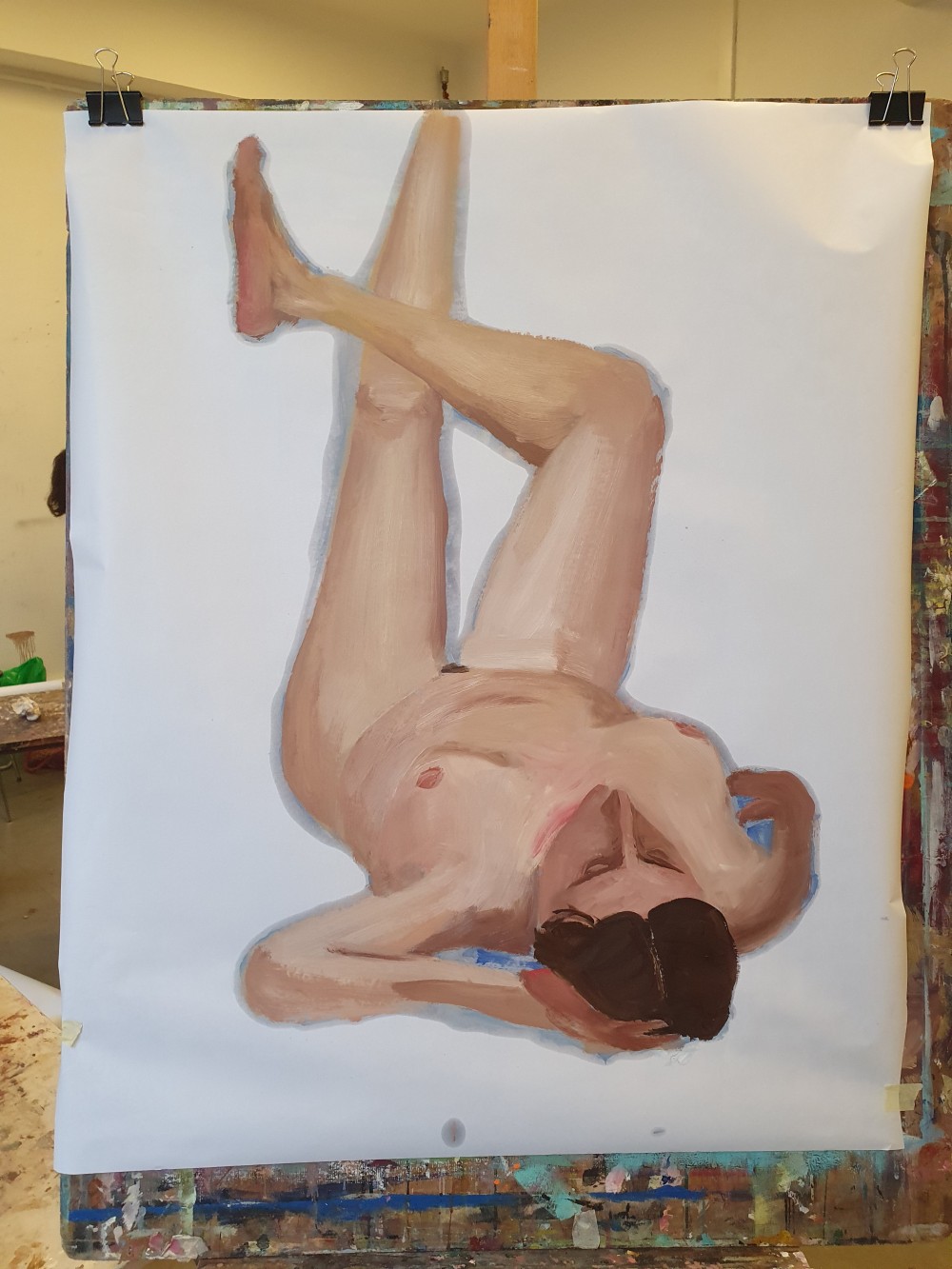I’ve now attended three of the weekly oil painting classes for amateurs at the Beaux-Arts school in Paris, and I can share some photos and impressions.

How to avoid killing the teacher
Before starting the class, I received a list of materials to buy, just like when I was a kid. I’ve never done oil painting on my own, so having no habits and no tools or paints already, I dutifully followed the instructions, with some help from the internet. One of the items to get was “vegetal paint thinner”, which was vague enough to confuse the shop assistant at Rougier & Plé (the assistant wasn’t very useful anyway and may have actively fled the scene when he realised I basically needed help with each item on the list).
I read online that the most common, and most toxic, and stinkiest paint thinner is turpentine. So, I thought, that’s probably what the school wants us to avoid, because from the online description it sounded like the worst of chemicals. But I also learned that turpentine is very much vegetal, as it’s distilled from pine resin. So… did the school say “vegetal” because they want us to bring turpentine? Full of doubt, I got a bottle of the pine-scented death essence.

Come the first class, I get all my stuff on my table, and our teacher, who is very nice, looks at one of the other students and exclaims “oh that’s nice, thank you, I see you got the vegetal, odourless thinner that I asked for! Because, you know, I’ve become allergic to turpentine, so if you don’t want to see me puff up, you’ll all need to use the odourless one”.
I discreetly put my bottle back into my bag and asked to borrow a bit of someone else’s non-lethal thinner. The next weekend, I went on a trip across Paris to a specialized shop, recommended by the teacher and other students, to get some of the teacher-approved thinner. The shop is called Marin and they have lots of fine art supplies, and in particular the “vegetal odourless paint thinner” that people who want to stay alive crave. It’s not the only shop that sells such a product, the Sennelier brand also has a “Green for oil” thinner with the same properties, I think.
The transparent halo around the model’s body is the oil and thinner spreading into the paper. Here the halo is big because the painting is from a week ago.

I was told both by Mr Marin himself and the teacher that there’s a significant difference in feeling between turpentine and the other product. Turpentine dries very fast (that’s why it has such a strong smell, it’s very volatile), while the vegetal odourless alternative is more oily and dries slowly, over several days. According to the teacher, it allows to avoid adding a “medium” to the paint (such as oil or special gels), which is simpler and more convenient for the classes, and allows to work “wet-on-wet”, meaning that successive touches of paint will mix with lower layers that are not dry. According to Mr Marin though, turpentine remains his recommended thinner, putting aside the environment and allergies, and he advised me to try using turpentine when I work on my own and don’t risk harming the teacher.
A typical class
The classes last four hours on Tuesday afternoons. The model takes poses of 20 minutes each time (which is about the maximum that they can endure anyway: it’s very tedious to stay still for that long). In order to allow us to work more that 20 minutes on a pose, the teacher organizes in total 4 different poses, with 2 sessions of 20 minutes for each pose. Basically A-B-A-B, then a break, then C-D-C-D, giving us about 40 minutes on each pose. The teacher puts tape on the podium to remember the model’s position, for example where their feet were, between poses.
Another challenge of being a model might be to not get offended by the sometimes terrible interpretations of your body. But also it wouldn’t be practical for me to keep saying sorry to the model during the whole session so here we are.

We paint on cheap white kraft paper, in big dimensions (about 1 square meter). The teacher’s motto is “the bigger you paint, the more you learn”. Rotating the papers between each pose is quite a dangerous activity, with the paper’s only idea being to roll back on itself and smear oily paint everywhere (on the other side of the paper, your clothes, the walls, the other students, no one is safe).

My current challenges

The teacher spotted that I was placing the light and shadow completely in the wrong places on one of the model’s breasts, so he drew a quick explainer of breast shadows.
There are several things I’m currently trying to figure out. The first one is how much thinner to use. Not enough, and you’re trying to spread basically the paint that comes straight out of the tube: it’s too thick and won’t cover the paper, leaving white spots everywhere. Too much thinner though, and you’ll end up with oily soup on the paper, which makes it hard to add different colours on top, when adding light and shade for example. You also get drippings, which are not necessarily bad but can look messy.
Another thing is that during the first session, I used only a smaller brush (1 cm wide flat brush) and that just took too long to cover big areas. I’ve gotten used to larger flat brushes (2 or even 3 cm wide) at least at the beginning, to block out the big areas of the body. Then it’s good to come back to a smaller brush to work on details.

The third thing I have in mind at the moment is how I use colours, especially compared to the other students. I tend to stick to very natural-looking tones, which is OK in that sense, but I would like to try bolder, bright colours, and learn to put more yellow, red, blue when appropriate, instead of just white, burnt Sienna and ochre. One student consistently uses a purple colour scheme, which looks really interesting, and others are very creative to place brighter colours, if not on the model’s body, in the background of the scene. I’m also mystified that they have time to paint a background when most of my poses end up without a face because that takes me too long (and as you saw, I’m bad at faces).

There are many other things to improve with my painting and drawing techniques in general, and I hope to be able to focus on more specific points during the next classes. So far they’ve been very interesting, and I’m looking forward to the next sessions.